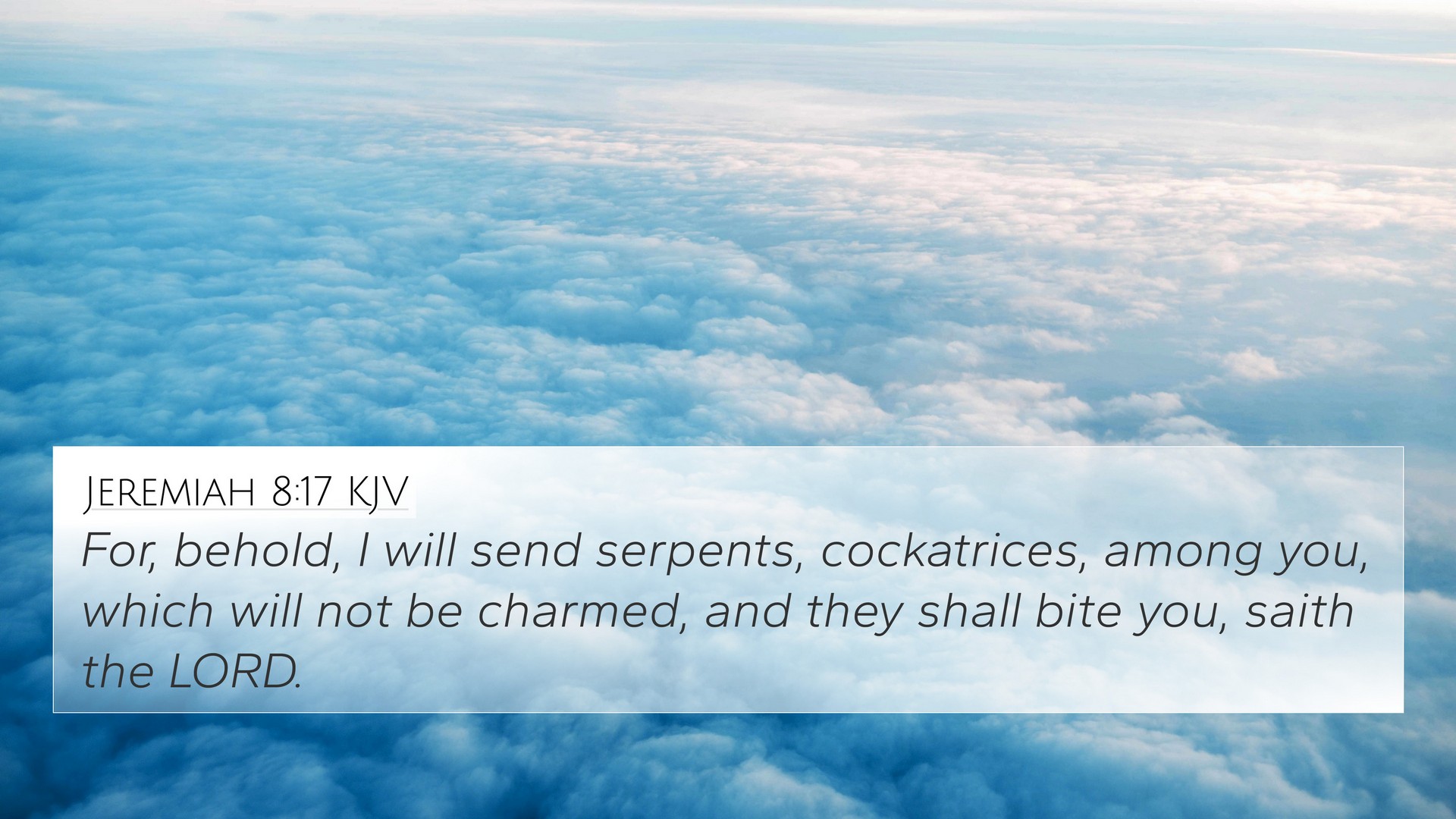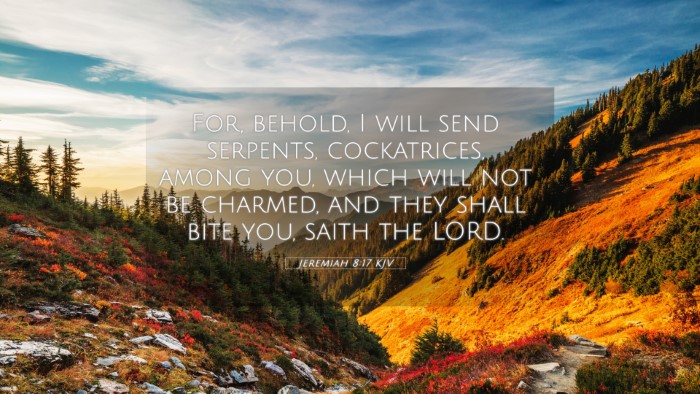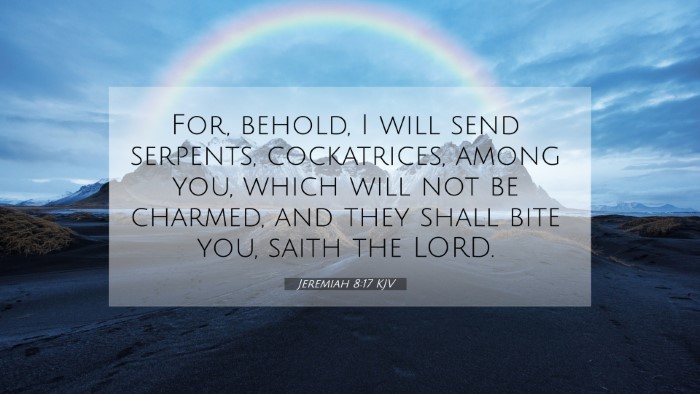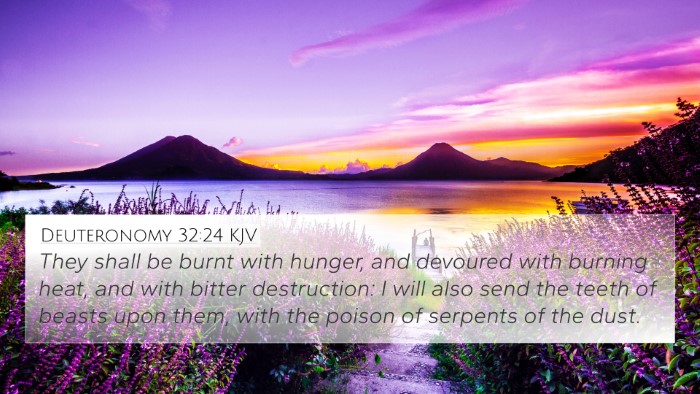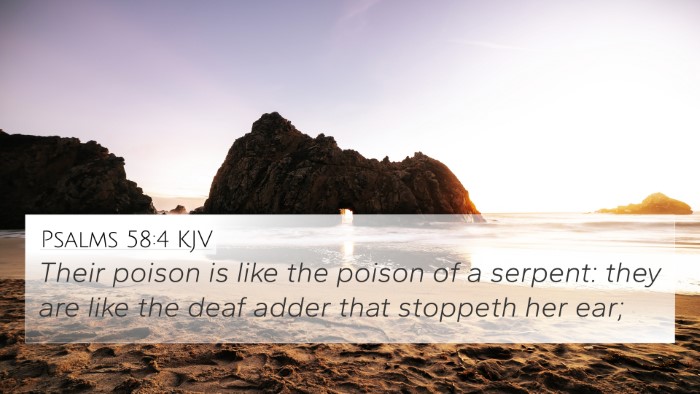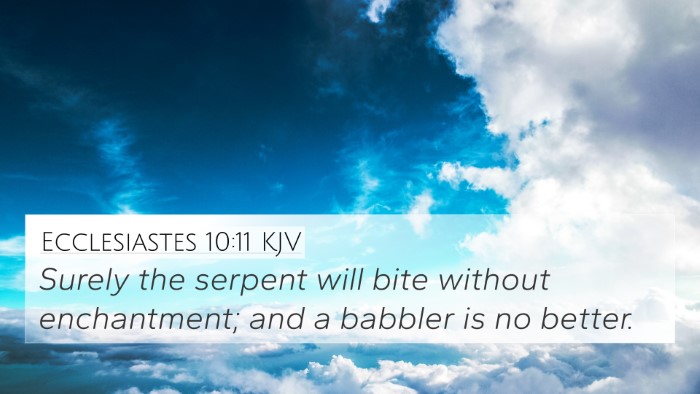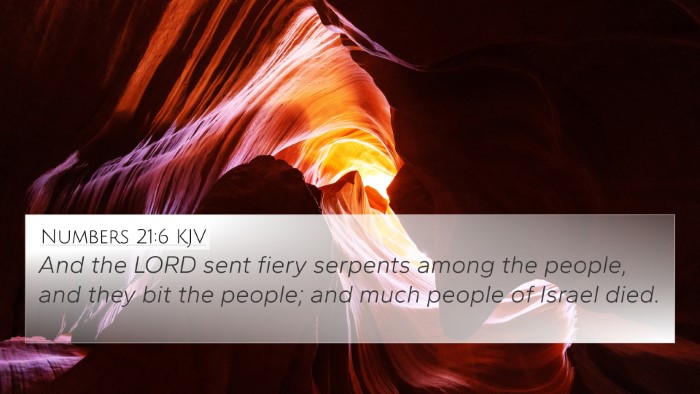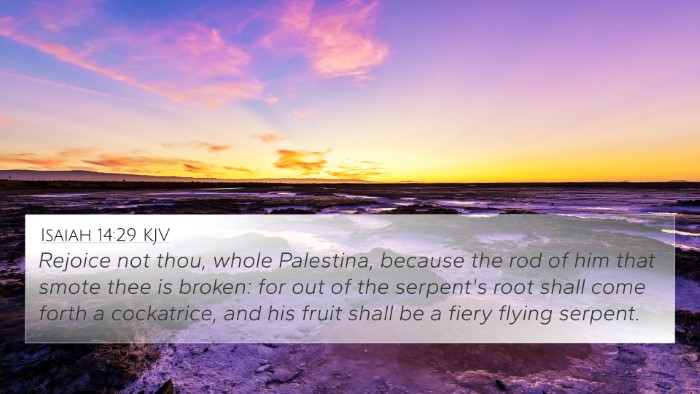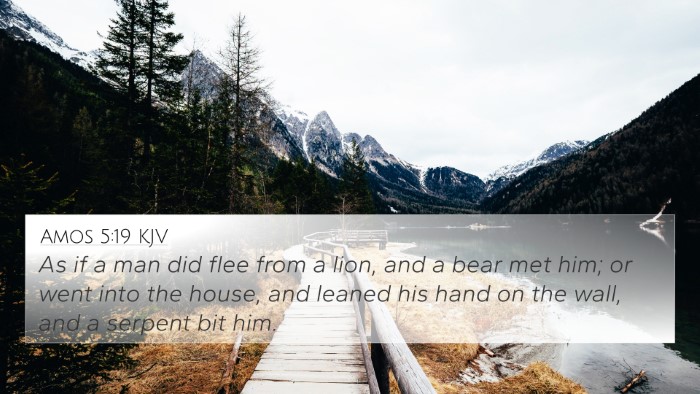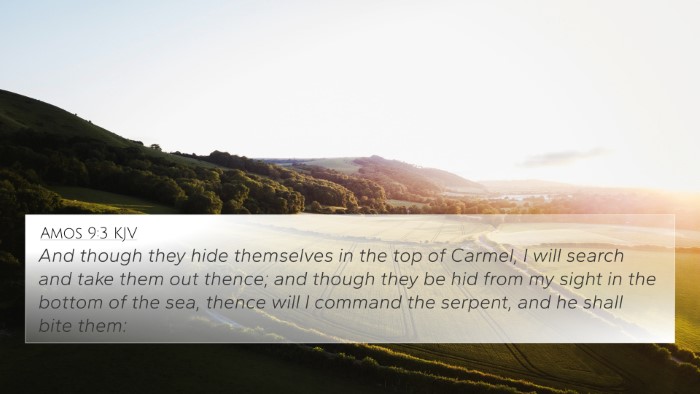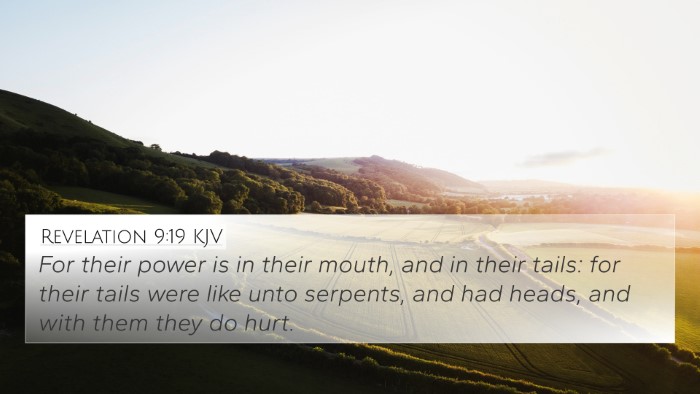Understanding Jeremiah 8:17
Jeremiah 8:17 states: "For, behold, I will send serpents, cockatrices, among you, which will not be charmed, and they shall bite you, saith the LORD." This verse is a part of the prophetic warnings given by Jeremiah, reflecting the severe judgment that God intends to bring upon His people due to their persistent disobedience and rejection of His ways.
Summary of Insights from Public Domain Commentaries
This verse has been examined by several learned individuals including Matthew Henry, Albert Barnes, and Adam Clarke, who provide insightful perspectives on its meaning.
Matthew Henry's Commentary
Matthew Henry emphasizes that the nature of the punishment mentioned in this verse is indicative of God's anger against impenitent sinners. He points out that the serpents symbolize the dangers that arise from the consequences of sin. Just as serpents bite, sin brings about severe repercussions that are often unavoidable once a nation or individual strays from God's commandments.
Albert Barnes' Commentary
According to Albert Barnes, the reference to "serpents" serves as a metaphor for invading forces or enemies that God would send as a punishment for Israel's transgressions. He explains that this judgment is selective, targeting those who have repeatedly turned away from divine instruction. Barnes elaborates that the imagery of "cockatrices" (a mythical serpent) represents particularly insidious threats that cannot be pacified, underscoring the idea that the Israelites' rebellion has led to their own peril.
Adam Clarke's Commentary
Adam Clarke adds depth to the discussion by noting that God's sending of these creatures is not arbitrary but is a calculated response to the people's hardheartedness. Clarke asserts that the inability to charm these serpents suggests that their fate has been sealed due to their lack of repentance. He highlights the futility of seeking relief or reconciliation once one has strayed too far, which ties into broader Biblical themes of divine justice.
Cross-References to Jeremiah 8:17
This verse resonates with several other scriptural passages that echo its themes and messages. Below are key verses that relate to Jeremiah 8:17:
- Deuteronomy 8:15: "Who led thee through that great and terrible wilderness, wherein were fiery serpents, and scorpions, and drought." This verse reflects on how God has been a protector and the consequences His people face when they stray.
- Isaiah 30:6: "The burden of the beasts of the south: into the land of trouble and anguish, from whence come the young and old lion, the viper and fiery flying serpent." Here, similar imagery is used to describe judgment and destruction.
- Numbers 21:6: "And the LORD sent fiery serpents among the people, and they bit the people; and much people of Israel died." This connection highlights God’s use of serpents as instruments of judgment.
- Matthew 10:16: "Behold, I send you forth as sheep in the midst of wolves: be ye therefore wise as serpents, and harmless as doves." This verse emphasizes the danger faced by believers amidst a hostile world.
- Revelation 12:9: "And the great dragon was cast out, that old serpent, called the Devil, and Satan, which deceiveth the whole world." This shows the ultimate threat posed by spiritual deception and opposition to God.
- Proverbs 22:3: "A prudent man foreseeth the evil, and hideth himself: but the simple pass on, and are punished." This speaks to the wisdom of heeding warnings and avoiding the consequences of foolishness.
- Lamentations 3:1-2: "I am the man that hath seen affliction by the rod of his wrath." This reflects on suffering as a direct result of turning away from God's commands.
Thematic Connections and Analysis
The themes present in Jeremiah 8:17 resonate throughout various parts of the Bible, linking Old Testament warnings with New Testament teachings about the consequences of sin and the need for repentance. One can observe a consistent dialogue about divine repercussions in the face of disobedience across both testaments.
Bible verse parallels
Similarities between this verse and others illustrate the interconnectedness of Biblical texts and their shared messages. Notably, the use of serpentine imagery crops up in various forms throughout scripture, emphasizing the universal nature of sin's consequences:
- Biblical texts often refer to serpents as symbols of sin and danger.
- The motif of people suffering as a direct result of turning away from God is consistent across both prophetic and historical accounts.
- The use of animal imagery to demonstrate spiritual truths is a thematic device employed frequently in scripture.
Tools for Bible Cross-Referencing
To further explore the connections and themes within scripture, referencing tools such as a Bible concordance or a cross-reference guide can be tremendously beneficial. These tools allow readers to:
- Identify connections between Old and New Testament scriptures.
- Conduct thematic Bible verse connections by tracing repeated motifs or warnings.
- Engage in comparative Bible verse analysis, especially across prophetic works and Pauline epistles.
Conclusion
In conclusion, Jeremiah 8:17 serves as a poignant reminder of the dire consequences of sin and the unyielding justice of God. The insights from commentaries, alongside the cross-references provided, illustrate the rich intertextuality of the Bible and invite a deeper understanding of scriptural themes. As individuals engage in cross-referencing and studying these connections, they gain valuable insights into the nature of God's warnings throughout history and their relevance today.
